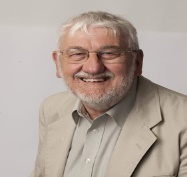Day 1 :
Keynote Forum
Peter J F Henderson
Astbury Centre for Structural Molecular Biology - University of Leeds, UK
Keynote: Kinetic and molecular dissection of coupled ion-substrate membrane transport proteins
Time : 09:30-10:10

Biography:
Abstract:
Keynote Forum
Magali Remaud Simeon
INSA - Université de Toulouse, France
Keynote: Mixing enzyme discovery with engineering for sucrose-derived bioproducts: The case of GH13 and GH70 polymerases
Time : 10:10-10:50

Biography:
Abstract:
Keynote Forum
Sergey Suchkov 2
I M Sechenov First Moscow State Medical University, Russia
Keynote: Principles of profi ling as applicable to the infrastructure of continuous education system to impact for having drug design to suit an innovative model of translational pipeline
Time : 10:00-10:40

Biography:
Abstract:
Keynote Forum
David Rabuka
Catalent Biologics, USA
Keynote: Developing site-specifi cally modifi ed ADCs using a chemoenzymatic approach
Time : 11:50-12:30

Biography:
Abstract:
- Industrial Biotechnology| Pharmaceutical Biotechnology |Biotechnology Applications
Location: Armstrong

Chair
Sergey Suchkov
I M Moscow State Medical University, Russia
Session Introduction
Iwona Zur
Polish Academy of Sciences, Poland
Title: Efficiency of the antioxidative system is the first prerequisite for effective doubled haploids production with the use of isolated microspore culture method

Biography:
Abstract:
Omirbekova N Zh
Al-Farabi Kazakh National University, Kazakhstan
Title: Development of approach to obtain Brachypodium distachyon L. regenerative plants with morphogenetic stability

Biography:
Abstract:

Biography:
Abstract:
Jean M Francois
Université Fédérale Toulouse Midi-Pyrénées, France
Title: Engineering carbon-conserving synthetic pathways for assimilation and conversion of C5/C6 carbon sources into added value chemicals

Biography:
Abstract:
Jean M Francois
Université Fédérale Toulouse Midi-Pyrénées, France
Title: Engineering carbon-conserving synthetic pathways for assimilation and conversion of C5/C6 carbon sources into added value chemicals
Biography:
Abstract:
- Structural Enzymology | Enzymology & Biochemistry
Location: Armstrong
Chair
Magali Remaud-Simeon
INSA-Tolouse, France
Session Introduction
Albert Jeltsch
University Stuttgart, Germany
Title: Molecular enzymology of DNA methyltransferases – conformational changes and allosteric regulation
Biography:
Abstract:
David J Merkler
University of South Florida, USA
Title: N-acyltransferases and their role in fatty acid amide biosynthesis
Biography:
Abstract:
Karlo M Lopez
California State University-Bakersfield, USA
Title: Lysyl oxidase: A versatile and elusive enzyme
Biography:
Abstract:
Biography:
Abstract:
Sotaro Fujii
Hiroshima University, Japan

